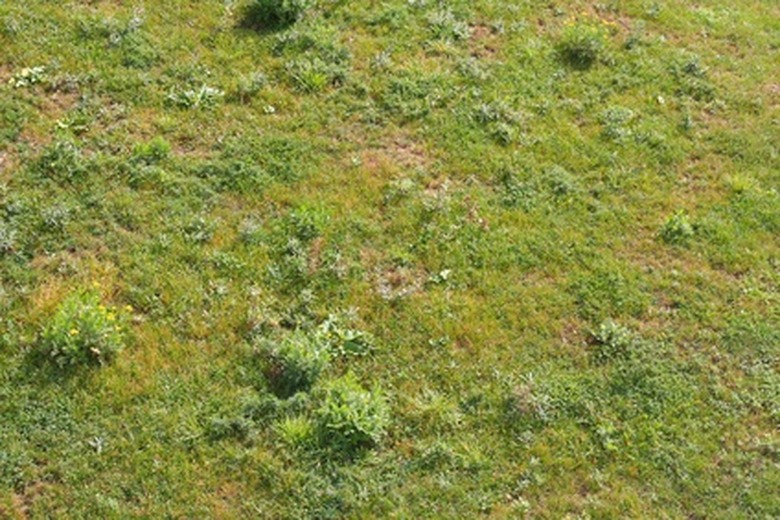Floratam Grass Weed Control
Floratam grass, most commonly known as St. Augustine grass, is a popular selection for warm-climate lawns such as those in Texas, Florida and along the Gulf Coast of the United States. The grass is easily adaptable to many soil types and watering changes (from drought to flood), but despite its adaptability it must contend with weeds.
Weed Problems
Floratam grass is generally successful at controlling weeds on its own, but if weeds manage to take control, they can cause a number of problems. Not only do weeds look bad in the lawn, but they compete with grass for necessities of life such as water and nutrients. Weeds taking hold in a lawn will result in dry, wilted grass, stunted growth and a patchy appearance. In St. Augustine grass, weeds are generally a symptom of a greater management problem.
Watering and Fertilizing
Floratam lawns that are watered more deeply and less frequently stand a better chance against weeds. Weeds can thrive in constantly wet areas, and since their roots tend to run shallower than the grass itself, they benefit from surface moisture. Floratam is tough enough that you can let the lawn dry out a little and begin to show signs of color change, wilting and loss of texture before watering. Weeds will dry out in the meantime. When you are ready to water, do so to a depth of 8 to 10 inches at a time to enrich grass roots.
- Floratam grass, most commonly known as St. Augustine grass, is a popular selection for warm-climate lawns such as those in Texas, Florida and along the Gulf Coast of the United States.
- Floratam grass is generally successful at controlling weeds on its own, but if weeds manage to take control, they can cause a number of problems.
Mowing
In general, a mowing height around 3 inches tall is ideal for St. Augustine grass to provide the lawn with a finished and attractive appearance, as well as ensure it gets the proper sunlight, nutrition and water without getting unruly. In the fall, as the dormant season approaches, raise the mowing height to 3 ½ or 4 inches. The greater spread of the blades of grass will help prevent weed seeds from taking root. It will also help the plant conserve energy against winter stresses.
Herbicides
Pre-emergent herbicides such as atrazine and benefin are most effective when combating weeds in a St. Augustine lawn. Apply these herbicides as early in spring as possible to prevent weed seeds from germinating. If necessary you can apply post-emergent herbicides in summer as long as the grass itself isn't under drought conditions and the temperature does not exceed 85 degrees Fahrenheit; otherwise the chemicals will also harm the grass. Use an herbicide like 2,4-D or dicamba to treat emerged weeds.
- In general, a mowing height around 3 inches tall is ideal for St. Augustine grass to provide the lawn with a finished and attractive appearance, as well as ensure it gets the proper sunlight, nutrition and water without getting unruly.
